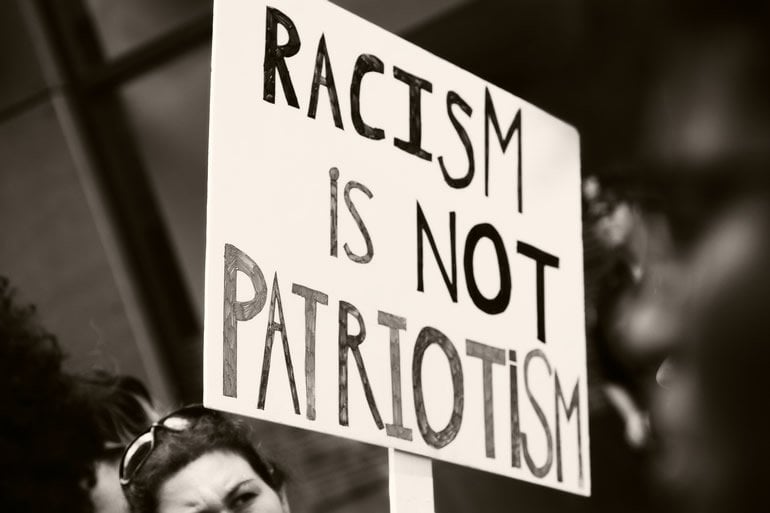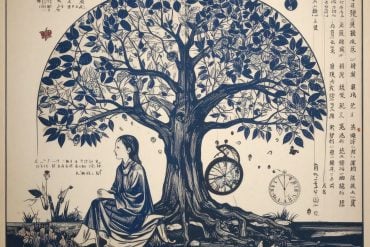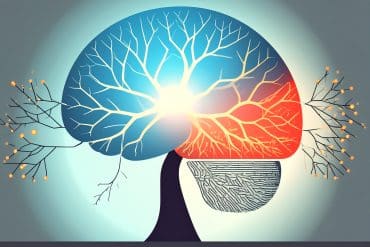Summary: Researchers contend racism is a deeply American problem and identify seven factors that contribute to racism in the U.S today. Of the seven factors, the most insidious, researchers say, is passivism, which includes apathy towards systems of racial advantage or denial that those systems exist.
Source: Stanford
“American racism is alive and well,” begins a new journal article led by Steven O. Roberts, a Stanford psychologist, that arrives during a time of heightened attention to racial injustice in the United States.
In the paper, which is available online and will appear in an upcoming issue of American Psychologist, the journal of the American Psychological Association, the scholars contend that racism is a deeply American problem and identify, based on a review of prior research published on the topic, seven factors contributing to racism in the U.S. today.
“People often define racism as disliking or mistreating others on the basis of race. That definition is wrong,” said Roberts, who directs the Social Concepts Lab, part of the psychology department, in the School of Humanities and Sciences.
“Racism is a system of advantage based on race. It is a hierarchy. It is a pandemic. Racism is so deeply embedded within U.S. minds and U.S. society that it is virtually impossible to escape.”
Roberts, an assistant professor and co-author, Michael Rizzo, a postdoctoral fellow at New York University and the Beyond Conflict Innovation Lab, write that “[j]ust as citizens of capitalistic societies reinforce capitalism, whether they identify as capitalist or not, and whether they want to or not, citizens of racist societies reinforce racism, whether they identify as racist or not, and whether they want to or not.”
After examining research on racism from psychology, the social sciences and the humanities, the researchers argue that American racism systematically advantages White Americans and disadvantages Americans of color – but that it does not have to. It all starts with awareness, they contend.
“Many people, especially White people, underestimate the depths of racism,” Rizzo said. “A lot of attention is rightfully put on the recent murders of Breonna Taylor, Ahmaud Arbery, George Floyd and far too many others. But people need to understand that those horrific events are a consequence of a larger system. We want readers to walk away with a better understanding of how that system works.”
Seven Factors
The first three factors Roberts and Rizzo reviewed are: Categories, which organize people into distinct groups; Factions, which trigger ingroup loyalty and intergroup competition; and Segregation, which hardens racist perceptions, preferences and beliefs. Simply put, the U.S. systematically constructs racial categories, places people inside of those categories and segregates people on the basis of those categories, the authors argue.
For example, there is a considerable body of research showing that people, adults and children alike, tend to feel and act more positively toward those they consider to be like them and in their “ingroup.” This means that they are likely to treat people from outside of their social circles less favorably.
For many White Americans, their ingroups do not include Black Americans. Part of the reason for this has to do with America’s fraught history of racial segregation, which kept White and Black communities separated. Roberts and Rizzo point to studies demonstrating that the amount of exposure a child has to other racial groups early in life affects how they will think about and act toward those groups when they are adults.
Research also shows that children are more attuned to faces of the racial majority group. That is, Black children are better at recognizing White faces than White children are at recognizing Black faces. This disparity can have tragic real-world consequences. In a criminal lineup, for instance, not being able to recognize Black faces, paired with biased preferences and beliefs, increase the odds that an innocent Black suspect will be misidentified as the perpetrator of a crime.
Roberts and Rizzo note that in cases where felony convictions were overturned because of DNA evidence, a significant number of the original convictions were due to incorrect eyewitness identifications.
The remaining four factors the researchers argue contribute to American racism include: Hierarchy, which emboldens people to think, feel and behave in racist ways; Power, which legislates racism on both micro and macro levels; Media, which legitimizes overrepresented and idealized representations of White Americans while marginalizing and minimizing people of color; and Passivism, such that overlooking or denying the existence of racism encourages others to do the same. In short, they argue that the U.S. positions and empowers some over others, reinforces those differences through biased media, and then leaves those disparities and media in place.
Of the seven factors they identified, perhaps the most insidious is passivism or passive racism, according to the scholars. This includes an apathy toward systems of racial advantage or denial that those systems even exist.
Discussions about passivism are particularly relevant now, Roberts said, as thousands take to the streets to protest against racism. “If people advantaged by the hierarchy remain passive, it is no surprise that those at the bottom cry out to be heard,” he added. “People have been crying for centuries.”
Anti-racism
At the end of the review, the scholars call for a move to anti-racism. Inspired by historian Ibram X. Kendi’s work, Roberts and Rizzo contribute two new terms to the conversation – reactive anti-racism, defined as challenging racism whenever it appears, and proactive anti-racism, or challenging racism before it appears.

“One of the most important steps for future research will be to shift our attention away from how people become racist, and toward the contextual influences, psychological processes and developmental mechanisms that help people become anti-racist,” Roberts and Rizzo wrote. “In a state of increasing racial inequality, we hope to find future students and scholars, both in the U.S. and beyond, well-versed and embedded within a psychology of anti-racism.”
In a move that they hope becomes standard, the scholars included an author’s statement in their paper indicating that one author, Roberts, identifies as Black American and the other, Rizzo, as White American.
“We [psychologists] often present ourselves as objective observers, but I think it’s important to acknowledge our own positionality,” Roberts said. “We put it in the author’s note to normalize it and say good work can come when people from different identities work together for a common goal.”
About this psychology research article
Source:
Stanford
Contacts:
Sandra Feder – Stanford
Image Source:
The image is in the public domain.
Original Research: Open access
“The Psychology of American Racism” by Steven Roberts and Michael Rizzo. American Psychologist.
Abstract
The Psychology of American Racism
American racism is alive and well. In this essay, we amass a large body of classic and contemporary research across multiple areas of psychology (e.g., cognitive, developmental, social), as well as the broader social sciences (e.g., sociology, communication studies, public policy), and humanities (e.g., critical race studies, history, philosophy), to outline seven factors that contribute to American racism: 1) Categories, which organize people into distinct groups by promoting essentialist and normative reasoning, 2) Factions, which trigger ingroup loyalty and intergroup competition and threat, 3) Segregation, which hardens racist perceptions, preferences, and beliefs through the denial of intergroup contact, 4) Hierarchy, which emboldens people to think, feel, and behave in racist ways, 5) Power, which legislates racism on both micro and macro levels, 6) Media, which legitimizes overrepresented and idealized representations of White Americans while marginalizing and minimizing people of color, and 7) Passivism, such that overlooking or denying the existence of racism obscures this reality, encouraging others to do the same and allowing racism to fester and persist. We argue that these and other factors support American racism, and conclude with suggestions for future research, particularly in the domain of identifying ways to promote anti-racism.







